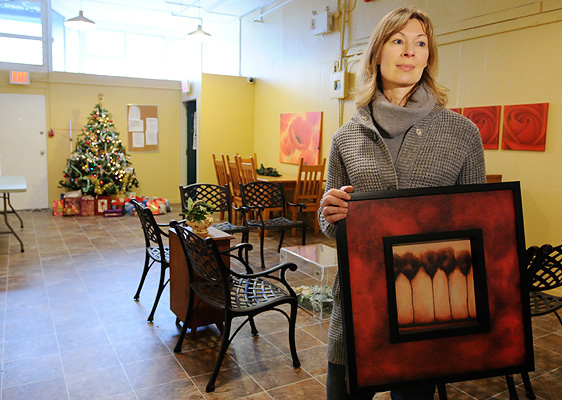MICHELLE HIGGINS
Other

Tourists walk along the beach in front of Zazilkin, a hotel with rustic cabanas in Tulum, on the Yucatán Peninsula. Michael Nagle for The New York Times
WHEN Alex Trettin and his wife, Jenn, suggested to family and friends that they take a group vacation to Mexico, the reaction was mixed. About half of the group of 29 immediately signed on for the November trip to the Riviera Maya, south of Cancún, where they would visit Maya ruins, fish and lounge by the pool at an upscale resort for the bargain price of $150 a person a night. The other half hesitated, citing concern about Mexico’s continuing drug war.
“My aunt stated she hoped we didn’t have any issues with the drug cartels,” said Mr. Trettin, a Mexico-travel specialist in Tacoma, Wash., who assured everyone that the beach resort they were going to near Playa del Carmen was far from the violent clashes they had seen on television. Ultimately, they all went, but the concerns that some in the group expressed are indicative of the quandary many travelers face when they consider the safety risks versus the convenience and affordability of a vacation in Mexico.
While most of the drug-related violence has been in the northern border region of Mexico, far from the Maya temples of the Yucatán, the regional cuisine of Oaxaca or the beaches of Baja California Sur, violence has erupted in tourist destinations like Acapulco and the state of Michoacán, home to the famous monarch butterfly sanctuaries. Even Cancún’s safety was questioned earlier this year after eight employees of a strip club there were killed when a group of men threw Molotov cocktails into the building in an area not frequented by tourists.
To combat the perception that violence has been widespread, tourism officials in Mexico have invested $30 million in advertising and social media initiatives to spread the word that much of the country is safe for tourists. “Visitors have the right to be well informed,” said Alfonso Sumano, the regional director for the Mexico Tourism Board for the Americas. Many of the affected areas, he said, “are very far from the destinations tourists visit.”
The latest travel warning, issued by the State Department in September, urged American citizens to defer unnecessary travel specifically to Michoacán and areas along the northern border, including Tamaulipas, and parts of Chihuahua, Durango and Coahuila, where tourists generally don’t go. Yet, ever cautious, it stated, “violence has occurred throughout the country, including in areas frequented by American tourists.” Visitors were encouraged to stay on main roads in daylight hours and to remain in well-known tourist areas.
All of this has made travel to Mexico a hard sell lately, but travel agents say the negative publicity has also made Mexico among the best values out there as resorts lower rates or add free incentives to entice travelers. When asked where agents are recommending travelers go to get the most for their dollar this year, 70 percent said Mexico, according to Travel Leaders, a major network of agents.
“A lot of clients will come here and say, ‘I’ll go anywhere except Mexico,’ ” said Kate Rosevear, owner of a Travel Leaders agency in Plymouth, Mich. “Quite often we’ll be able to talk them back around to it based on the value.”
Some of the deals agents and tourism officials point out include Casa Ticul, a boutique hotel in Playa del Carmen, which is offering 20 percent off rates of $171 a night to travelers who book a January stay by the end of December. Villa del Palmar Cancún, a new all-inclusive resort in Playa Mujeres with a Greg Norman-designed golf course, has rates from $186 a person a night during the holidays and a rate of $142 a person a night after that — up to 60 percent off. And St. Regis Punta Mita is offering butler service, a third night free, a $50 resort credit per room and a glass of Champagne with its Welcome to Paradise deal from $580 a night for stays starting Jan. 11.
Mexican Destinations, the Mexico Villa brand of the rental company VacationRoost, has trained its agents to educate clients who call with safety concerns about how far its villas are from reported violence, and is offering specials of 25 to 50 percent off. One deal is Casa del Sol, a four-bedroom, five-bath property on the Pacific Coast in Ixtapa-Zihuatanejo, where rates have been slashed to $750 a night, from $1,500, in early January.
The pricing strategy seems to be working. The number of international tourists arriving in Mexico by air from January to October was 8.2 million, according to the latest data from the Mexico Tourist Board. That is an increase of 17.8 percent compared with the same period last year, when Mexico endured a down economy, H1N1 scares and drug violence. Visitors are up 6.4 percent over the same period in 2008, which was considered to be one of the best years for travel to Mexico. The number of American travelers increased by 13.4 percent, compared with the same time period in 2009.
Many resorts say safety is at the top of their guests’ minds. “When our reservations manager receives requests, the first question that is asked is if there has been violence in this area,” said Giorgio Brignone, the proprietor of Costa Careyes, a luxury resort two hours south of Puerto Vallarta, which has added free airport transfers to and from Manzanillo. To put jittery travelers at ease, the company has placed ads in magazines promoting “a different Mexico.” In addition, the company’s Web site highlighted the 24-hour security at the resort.
Part of the problem is that many travelers are unclear about where the violence has occurred and how it might affect their vacation, Mr. Brignone said. “People don’t realize that there are many regions and areas in the country that are not affected by the violence and drug wars,” he said. “It’s like saying I will not go to Dallas, or New York, because there are problems or riots in Los Angeles.”
Still, there are some tourist destinations travelers should steer clear of, at least for now. “I would not encourage my family to visit Acapulco right now,” said Josh Miller, who lives in Mexico City and is the general director for Mexico, Central America and the Caribbean for Control Risks, a risk management firm. “While a wonderful place to visit,” he said, “violent confrontations have been spilling over from the military effort against the cartels.” Travelers should also hold off on visits to Michoacán, in central Mexico. The state is a stronghold of La Familia, a drug cartel known for bold ambushes.
Popular resort areas, including Mazatlán, Puerto Vallarta, Ixtapa and Cancún’s resort strip are generally safe for travelers, Mr. Miller said, particularly if visitors stay within the resort’s boundaries. “Mexico is a volatile place,” he said. “You have to have your itinerary planned out quite well, consider transportation and stay abreast of latest developments.”
Some travelers who have been to Mexico before are surprised when friends express safety concerns. “Everybody was like, ‘What? You are going to Mexico?’ ” said Tina Youtsey, a dog groomer from Milan, Mich., who went to the Riviera Maya with her teenage daughter last month. “Seriously,” she said, “the drug lords aren’t hanging out at the resort.” Having visited Mexico two times before, she added, “I wasn’t really worried.”
© Copyright (c) New York Times






